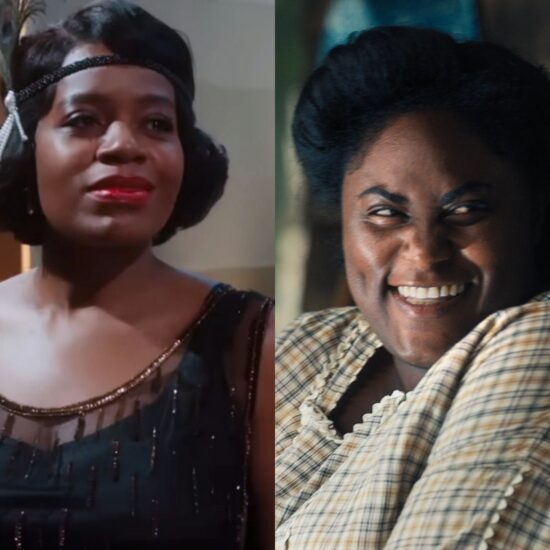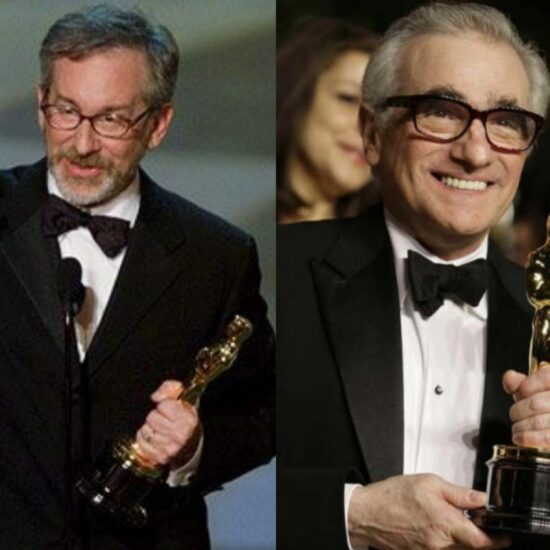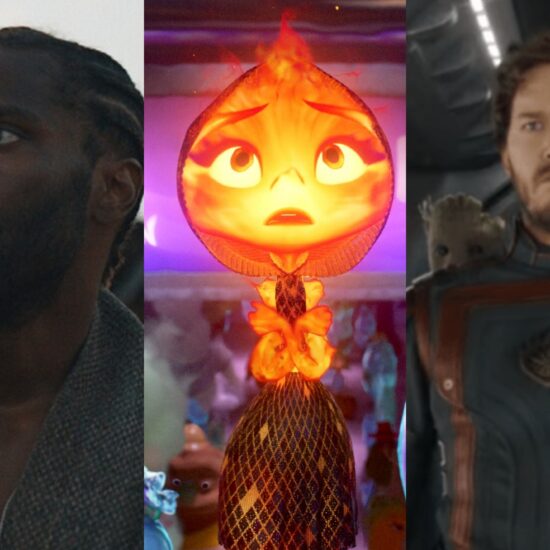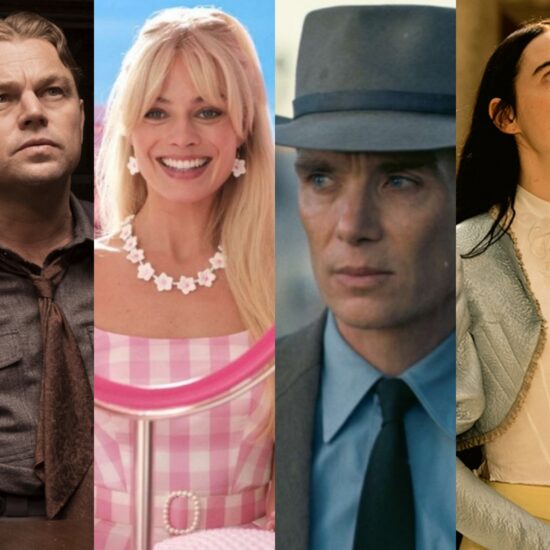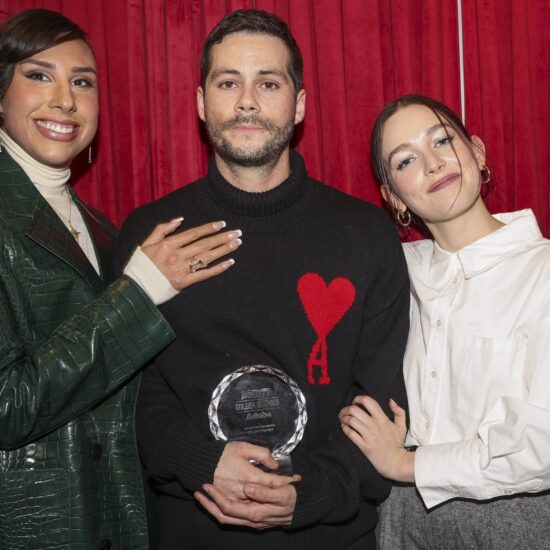
From Steven Soderbergh to Zhang Yimou, many directors also spend time as cinematographers. Fewer directors come out of production design, but when they do (hi Robert Eggers) it also makes sense. Filmmaking is image making, and what’s arranged inside the frame is ultimately what creates the evocative texture and feeling of a whole world. Or, in the case of “Loki,” it’s what creates the feeling of whole timelines.
So it’s both a little surprising and makes complete sense to learn that “Loki” production designer Kasra Farahani stepped into the writers’ room for Season 2 and the director’s chair for Episode 3 of this season. One of the great joys of “Loki” is its dense, retro-future look; it’s one that required a lot of collaboration between the writing and production design teams in Season 1 and led to Farahani and his art department making a lot of visual additions.
“Environments like the chrono monitoring set, for example, were not strictly scripted, but they were something that we proposed within the art department as a place to capture a lot of smaller places in the script, to create a more central hub. Same with the design of the Loki palace, [that] was not in the script, for instance. So there was a really nice back and forth between writing and design,” Farahani told IndieWire.
As Season 2 dives straight into the (actively crumbling) foundations of the TVA and Loki’s (Tom Hiddleston) quest to save it, it felt natural to bring Farahani into the writer’s room. It gave him a more total understanding of the emotional arcs for each of the characters and the chance to start prep on production as early as possible, shifting from a mod ‘60s aesthetic of the polished TVA services to a more Cold-War-bunker look underneath.
“I wanted the temporal core and the systems level generally, where OB’s [Ke Huy Quan] workshop is, to have a more raw, rough, and more primitive feel,” Farahani said. “Which is why you see a lot of these minty greens. There’s actually a whole spectrum of greens from warm to cool that populate the space.”
Farahani started his career as a concept artist, illustrating possible looks and feels of worlds both as fantastic as “Black Panther” and as grounded as “Jarhead.” From there he moved into production design. But along the way he had aspirations across his own TVA-worthy branching timelines. “A lot of my colleagues who are brilliant concept artists, they would go home and they would practice their craft and they’d learn new software and techniques to become better and better concept artists,” Farahani said. “I put in that work too, but I spent that work learning how to write scripts and making short films. I made the choice to diversify my skill set, which was a perilous choice, honestly. People like to have a clear idea of what you can do. It can be confusing if you do a lot of different things.”
There’s a real benefit to having the kind of command of story that comes from approaching it across a number of different disciplines. “From illustrator to art director to production designer to writer/director, you’re just getting a bigger paintbrush,” Farahani said. “You’re making an image that is representing 10 different things going on at the same time.”

The process becomes even more focused when directing. “Every little detail in the frame, every piece of blocking that you work out with the actors, every piece of blocking that you work out for the camera — whether it’s handheld or something smoother on a Steadicam or a dolly — the choice of lens, the curation of the props and the environment itself: all of these things are critical decisions,” Farahani said. “All of them come together to make a single two-dimensional image that imparts meaning.”
In the case of “Loki” Episode 3, Farahani had to balance a set of large-scale locations tied to the Chicago World’s Fair with the ongoing tension between Loki and Sylvie (Sophia Di Martino); with Renslayer’s (Gugu Mbatha-Raw) and Miss Minutes’s (Tara Strong) ongoing light treason against the TVA with He Who Remains (Jonathan Majors); with introducing Victor Timely (also Jonathan Majors), a variant of Kang (still Jonathan Majors) who might hold the key to the TVA’s survival and/or to the death of all worlds.
Farahani built, lit, and shot the Chicago sets first in order to craft a sense of mystery around Victor. “We knew the audience would obviously know that at some point a Kang variant would show up,” Farahani said. But the audience wouldn’t know the nature of the variant. “So basically the objective is to keep the nature of this character shrouded.”

The World’s Fair itself holds that same sense of mystery in its scale, with Loki and Mobius (Owen Wilson) scurrying down pathways and around corners in search of any clues. But for that, Farahani and his design team needed to build up. “You always try to design, when you’re in a set like that, you try to build up high enough. So I think we went 16 feet, sometimes in some places higher than 16 feet, so that you’re not having to [digitally extend the set] in every single shot,” Farahani said.
Farahani saves more dramatic camera movement and intensive collaborations with VFX for the moments of pure chaos, as when Loki and Sylvie fight inside the Ferris Wheel as a giant Miss Minutes terrifies the World’s Fair patrons. “That giant Miss Minutes sequence was so fun and so complicated, just the sheer number of extras, the camera movement, the design and the lighting effect of a giant Miss Minutes,” Farahani said. “The choreography of that scene was super elaborate.”
But it feels natural and right that the most electric moments of the episode aren’t when Loki and Sylvie are shooting magic blasts at each other. It’s the atmospheric introduction Farahani constructs for Victor, which was also used for the post-credits sting in “Ant Man and the Wasp: Quantumania.” The stilted, bombastic cadence of Majors’ performance combines with the quickening, thready rhythm of the cuts by editor Emma McCleave and with Farahani’s framing of the silhouetted figure we know to be Kang. Or at least a Kang. Together, they imbue Victor with a power he wouldn’t have if we could see him clearly from the start.
“Hopefully you [create] this tension in the audience when they can tell by the voice that it’s a Kang variant but you delay as long as possible revealing what it is that he’s up to,” Farahani said. “I didn’t know it was going to be a post-credit scene. I think that was something that was decided later and I was incredibly flattered to have it on the big screen.”











